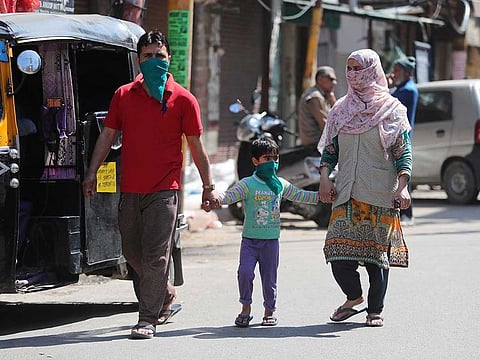India must act fast and talk less on coronavirus
An urgent stimulus in the form of incentives or relief is the antidote that economy needs

If India — its people, its markets and the economy — was expecting a heightened government-led action in the last 48 hours, it didn't happen. It was the same tempo as before — the rupee dropped further, the main stock indices inched up slightly after the rout of previous days, and more people decided to stay home.
So, on Sunday, when Indians go into a self-imposed home-stay for a day, the question remains — is this the sum total of India’s response to the COVID-19, which threatens to wreak global havoc and take down economies?
So far, the Indian government’s actions lack in speed of thought and action. The words “rapid” and “response” need to go together if the virus-induced havoc has to be avoided.
India's only rapid action was to raise domestic fuel prices at a time when international oil prices have slipped to decade lows. But beyond that, it’s been all talk and committees.
Why committees are not a good idea
So, a new committee headed by Finance Minister Nirmala Sitharaman will be set up — as per Prime Minister Narendra Modi’s speech two days ago. It’s got a fancy title — COVID-19 Economic Response Task Force — but the last thing India needs now is for ministers to meet endlessly to come with a response.
Governments worldwide have announced stimulus packages, have initiated actions on a war footing. And yet global markets are responding with trepidation — US President Donald Trump’s $850 billion announcement was met by a stock meltdown.
India needs to put a dollar/rupee number on a package to assure its citizens and anyone waiting for it to make a move. Even if the numbers are woefully inadequate, it doesn’t matter. Make a move. Make any move.
What India should do
The Indian government must draw up a draft plan and announce it. Call it any name — stimulus, relief, whatever — but something needs to be done. Now India is losing weeks and it cannot afford to lose the fight against this pandemic.
The finance minister had announced a raft of incentives, including corporate tax cuts, in the second half of last year and in this year’s budget to spur investments by corporates and individuals. Have they started showing results? Or will the prospects of those initiatives be undermined by the virus that threatens to drag down economic growth further?
Tasking the finance minister to chalk out more solutions to insulate the economy from the outbreak and even claw back some growth is probably asking too much. Clearly, she has Modi’s confidence, but does she inspire the markets? (She may already have burnt some goodwill with India’s bankers after she was heard snapping at top State Bank of India brass at a recent meeting. And after the firefighting, the State Bank of India had to do on the Yes Bank fiasco) .
Does the solution lie in more tax breaks for businesses and individuals? Or will it need to more drastic? India’s industry, retail and real estate sectors are already reeling from the growth stumble, and it’s getting worse. Now to that mix of underperforming categories, add airlines, hospitality and just about everything else.
The plunging rupee
The rupee’s plunged to an all-time low and is now at over 75 to the dollar. The Indian central bank has been making interventions, but so far has little to show for it. If the rupee slips further — the pressure on it will be unremitting in the next quarter — 78-79 could well become the new normal. Can India afford the rupee at these levels?
The central bank and the government need to send out signals on what level it can live with. The only big positive right now for the government is that the oil imports won't cost much.
But the rupee's perpetual weakness will not help India’s other importers. India could do with some decisive action — or insight on what the government thinks, at least on the rupee.
Why stock market mood is important
Around $10 billion in foreign funds have exited India’s stock markets, which is normal in these troubled times. India has more worries than stock prices at this moment, but the markets are a gauge of the popular mood at the best and worst of times. This is where government delays in decision-making erode investor confidence.
Airlines’ flight into turbulence
It has been the best of times and the worst of times for the Indian airline industry. Kingfisher and Vijay Mallya are gone, Jet Airways is grounded by management ineptitude, and Air India keeps bleeding.
But the industry still has managed to produce some of the best growth rates in Asia and beyond as air travel became more accessible to citizens. But the pandemic has put a full stop to that. More than 100 aircraft of India’s airlines could be grounded in months.
The Indian government needs to put out fires on multiple fronts: “Rapid” task forces are what the country and the economy needs. Incentives and relief in any form would be welcome.
Maybe, the government needs a “technocrat” to run the finance ministry at a time of such economic distress. It’s been done before. In 1991, the move laid the foundation for the Great Indian Reform.
As always, the Indian “Janata” will be watching and waiting. Never mind the self-imposed lockdown.
Sign up for the Daily Briefing
Get the latest news and updates straight to your inbox







